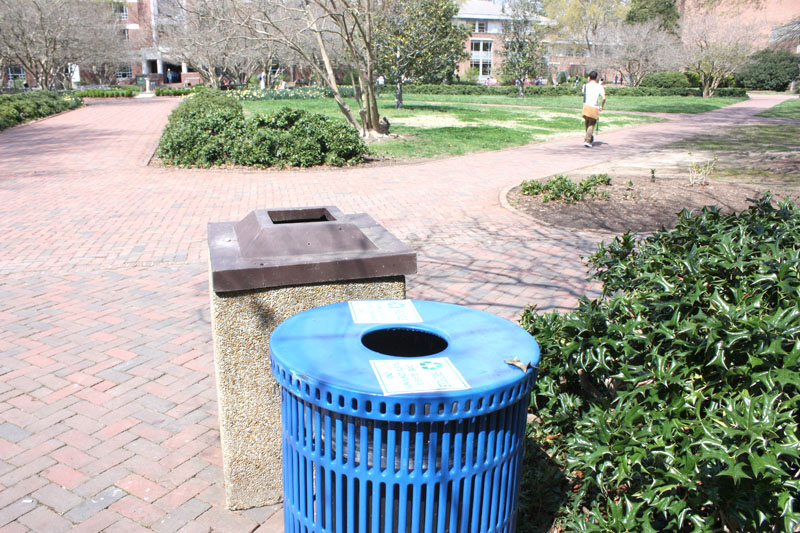Students at the College of William and Mary are greener than they may think.
Every student at the College contributes $15 to make the College’s campus more sustainable as part of a “green fee” clause included in the fees for every student.
With the student contribution to the Green Fees and Summer Research Grants fund, the Committee on Sustainability receives approximately $200,000 to $215,000 each year for projects to improve sustainability at the College.
Forty thousand dollars of these funds automatically go toward a green endowment to be used later for larger projects while the remainder is divvied up between the fall and spring semesters, summer research grants and the reusable bags and bottles given to incoming freshman during orientation.
“Most projects are approved if they benefit the community members — students, faculty and staff alike,” Mary-Carson Saunders J.D. ’13, co-chair of the COS Operations subcommittee, said. “Projects must promote values of sustainability and work to promote research, action or collaboration. Often, projects that may not actually lead to immediate innovations on the campus are approved and encouraged because their existence raises awareness and educates the community about existing technology or sustainable practices.”
During the fall semester, the Steering Committee for COS reviewed the applications for projects and approved funding for 11 new projects.
Some of the projects included several water-conserving fixtures in different buildings on campus, many applications for garden implementation or maintenance, funding for Earth Week, which included movies and talks about being environmentally friendly, composting on campus, and the new Paperless Document Delivery system in Earl Gregg Swem Library, which distributes copies of books via PDF files instead of on paper.
“Over 120,000 paper photocopies were made in Swem last year,” Acting Director of Research, Instruction and Outreach Services at Swem Don Welsh said. “With this new scanner and document delivery system, we can take that number down to almost nothing, and besides saving paper, we will be saving thousands of dollars in paper and toner.”
Fewer projects were funded for the spring semester, but committee members remained enthusiastic about implementing them.
Members have funded a proposal to bolster energy saving through a new recreation center lighting system with more energy-efficient bulbs and motion sensors, as well as new lighting retrofits to be installed in the Sir Christopher Wren Building.
There will be an expansion of exterior recycling bins around campus and permanently installed bike racks around the Sunken Garden to encourage less driving around campus.
“I think [change] does have an impact. Although not perceived easily. A lot of what we fund and support results in significant savings for the College through reduced energy costs and more efficient waste-management, which is important in this economic situation,” Dennis Taylor, co-chair of the Steering Committee and professor of marine science, said.
The College has seen a significant reduction in non-compostable waste through the use of more locally-grown, organic foods in dining facilities and the installation of more recycling bins.
The committee also wanted to create more opportunities for student research and involvement in the process.
“Since fall of 2008, the committee has really come a long way [and] provided a lot of varied research opportunities that [have] had a real impact on a number of programs in science and social science areas with original research,” Taylor said.
Five thousand dollars have also been put into the planning and revamping of Earth Week at the College, which begins April 16.
“We have really expanded that event into a big, week-long event,” Patrick Foley ’12, co-chair of programs and education subcommittee, said. “[President Taylor] Reveley is going to be an active participant in jeopardy, a raft debate, and a reading of Dr. Seuss’ The Lorax. We just really want to get students more involved.”

